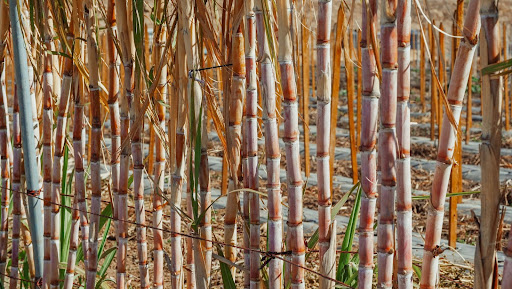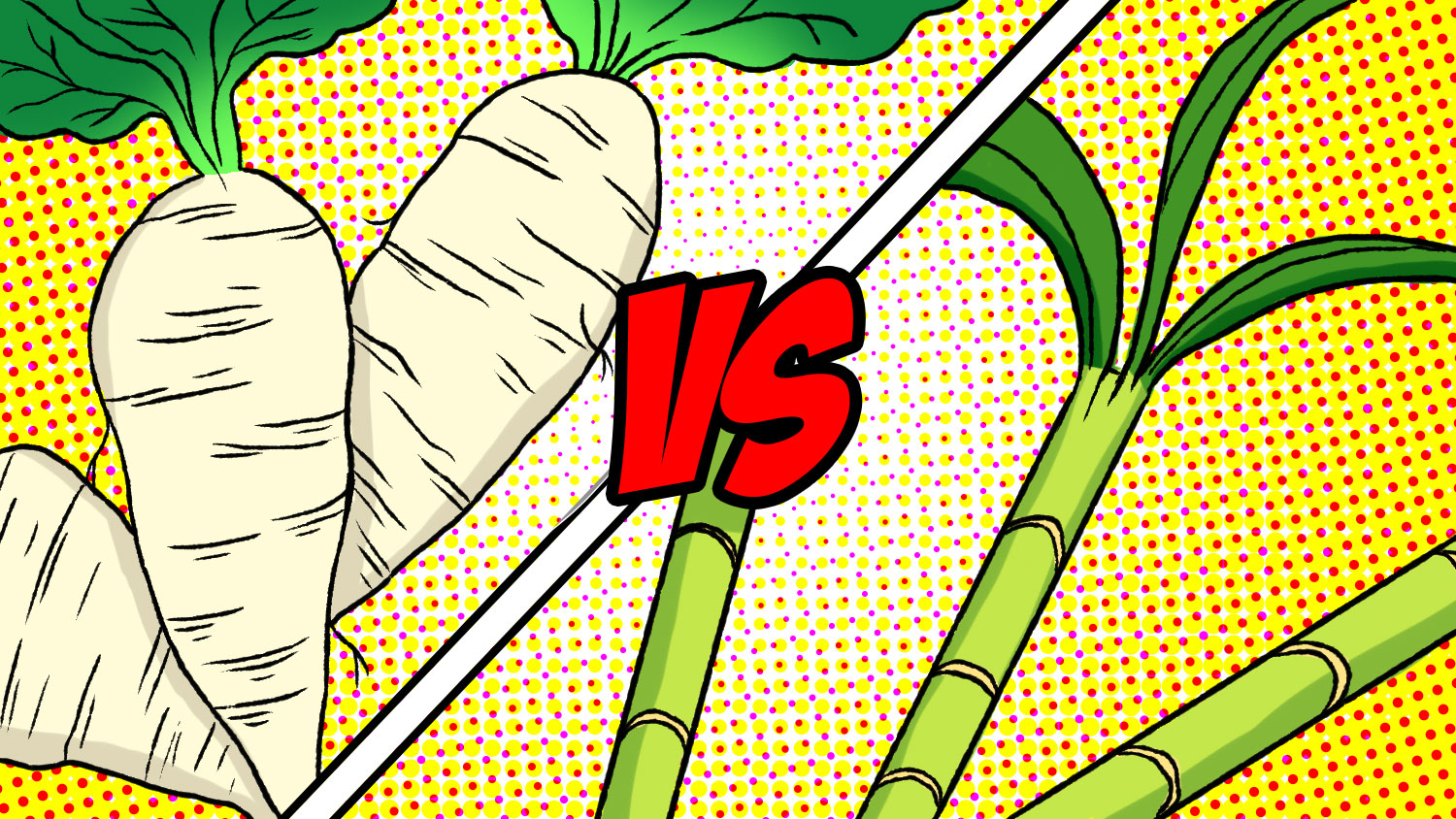How sugar beet vs sugar cane differ in terms of processing methods and production efficiency
Comprehending Sugar Beet Vs Sugar Cane: Secret Distinctions and Their Significance in the Global Sugar Industry
The differences between sugar beet and sugar cane are significant in the context of the worldwide sugar sector. Their differing climatic needs influence where they can be grown, while their unique nutritional accounts affect customer preferences. In addition, the financial ramifications of each crop shape market dynamics. Recognizing these distinctions is crucial for understanding the broader influence on manufacturing and supply chains. What more intricacies develop when considering their duties in the industry?
Climate and Geographic Flexibility
Sugar beet and sugar cane exhibit unique environment and geographic versatility that affects their growing. Sugar beet flourishes in pleasant environments, requiring cool weather condition for ideal growth. It is mostly grown in regions such as Europe and North America, where conditions prefer its growth during springtime and fall. On the other hand, sugar cane flourishes in tropical and subtropical climates, demanding cozy temperatures and plentiful rains. This plant is mainly cultivated in nations like Brazil, India, and Australia, where the environment sustains its long growth cycle.The differing versatility of these crops impacts not just their geographical circulation however additionally the farming practices utilized by farmers. Sugar beet's strength to colder temperatures permits earlier planting, while sugar cane counts on a much longer growing period to achieve optimal yield. Recognizing these climatic choices is essential for enhancing manufacturing and ensuring food safety and security in areas based on these important sugar sources.
Farming and Harvesting Methods

Cultivating sugar beet and sugar cane involves distinct methods customized to every plant's details development demands. Sugar beet is commonly sown in trendy, pleasant environments, calling for well-drained dirt and exact spacing to permit optimal origin advancement. Sugar beet vs sugar cane. Farmers commonly use mechanical planters to guarantee uniform seed placement, followed by normal watering and weed management methods to support growth.In comparison, sugar cane grows in warmer climates and is normally circulated with stem cuttings as opposed to seeds. Planting takes place in rows, permitting for sufficient sunlight and airflow. Harvesting sugar cane is labor-intensive, commonly involving manual cutting or using specialized equipment, depending on the scale of manufacturing. On the other hand, sugar beet harvesting uses mechanical farmers that remove the roots from the soil, minimizing damages and ensuring a cleaner item. Both crops require careful administration to make best use of return and high quality, reflecting their importance in the worldwide sugar sector
Processing Methods and Performance
Handling techniques for sugar beet and sugar cane reveal key distinctions that influence performance and yield. Sugar beetroots undertake a series of steps, starting with my explanation slicing the root right into thin cossettes, followed by extraction of juice with diffusion or pushing. This juice is then purified, concentrated, and taken shape, leading to granulated sugar. The procedure typically takes regarding 5-10 hours from harvesting to crystallization.In comparison, sugar cane handling entails crushing the stalks to remove juice, which is after that heated up and clarified. The juice goes through evaporation and crystallization, frequently taking much longer than beet handling as a result of the fibrous nature of the cane. Furthermore, sugar cane can be processed continually, enhancing efficiency.
Economic Effect and Worldwide Production Patterns
The differences in handling techniques in between sugar beet and sugar cane not only influence efficiency however additionally have significant economic ramifications. Sugar cane dominates in exotic areas, providing reduced manufacturing prices due to beneficial climatic problems and lower power needs. On the other hand, sugar beet is mostly grown in temperate areas, where greater manufacturing costs are usually sustained. This geographical difference impacts global supply chains, affecting rates structures and availability.Recent patterns show a rising and fall worldwide need for sugar, with both crops experiencing price volatility. visit site As countries go for self-sufficiency, financial investments in local sugar beet manufacturing have actually raised, specifically in Europe and North America. At the same time, creating nations proceed to count greatly on sugar cane, driven by export possibility. On the whole, the economic influence of these crops is profound, shaping agricultural policies, trade agreements, and the sustainability of the worldwide sugar industry.
Nutritional Profiles and Wellness Considerations
While both sugar beet and sugar cane function as main resources of sucrose, their dietary accounts and health factors to consider vary significantly. Sugar cane, commonly viewed as an extra natural sweetener, includes trace amounts of vitamins and minerals, consisting of calcium and potassium, in addition to anti-oxidants. On the other hand, sugar beet is largely made up of sucrose with marginal dietary value, but it is abundant in fiber and specific phytonutrients, which may provide digestive benefits.Health considerations bordering both resources concentrate on their high glycemic index and prospective ramifications for obesity and diabetic issues. While both kinds of sugar add to calorie consumption, the handling techniques can impact their wellness influence. Sugar beet commonly undergoes comprehensive refining, while sugar cane may maintain more of its all-natural substances in much less processed kinds, such as raw cane sugar. Inevitably, small amounts is essential when incorporating either into a well balanced diet regimen.
Frequently Asked Inquiries

Which Regions Largely Grow Sugar Beet Versus Sugar Cane?
Regions primarily growing sugar beet include Europe and North America, while sugar cane thrives in exotic and subtropical areas such as Brazil, India, and Southeast Asia. Environment and soil conditions substantially affect these agricultural patterns.
How Do Sugar Beet and Sugar Cane Differ in Taste?

What Prevail Byproducts of Sugar Beet and Sugar Cane?
Common by-products of sugar beet include molasses and animal feed, while sugar cane site web yields bagasse, molasses, and ethanol. Both plants add substantially to numerous markets, improving sustainability and economic worth past their primary sugar manufacturing.
Just How Do Environmental Elements Influence Sugar Beet and Sugar Cane Yields?

What Is the Historic Significance of Sugar Beet and Sugar Cane Growing?
The historical relevance of sugar beet and sugar cane growing hinges on their duties in international economic situations, farming techniques, and profession. Both crops shaped social frameworks, affected colonial plans, and added to the growth of contemporary markets.